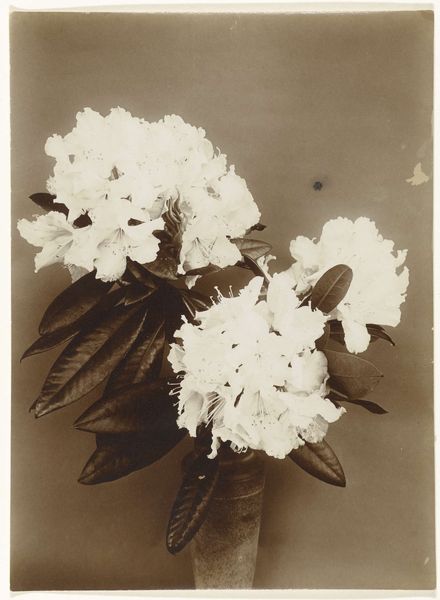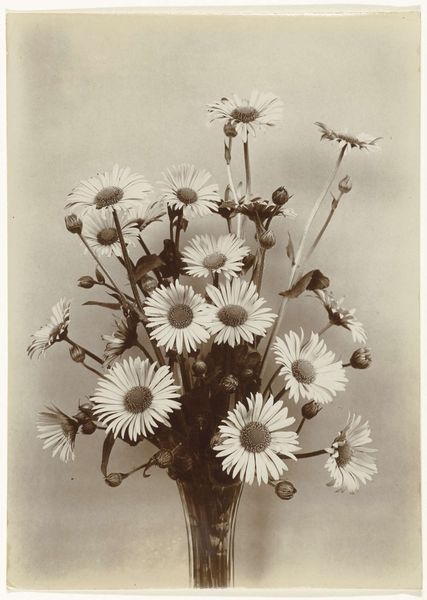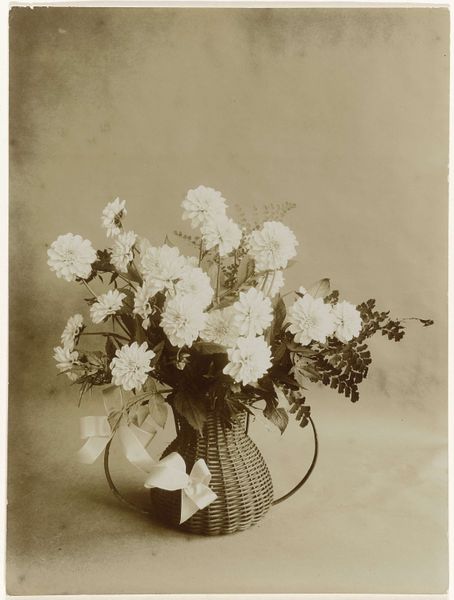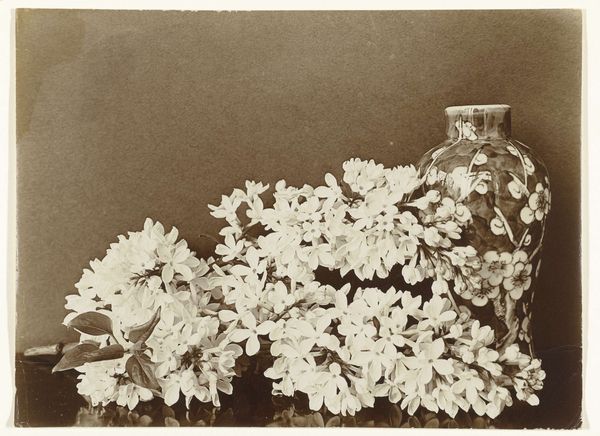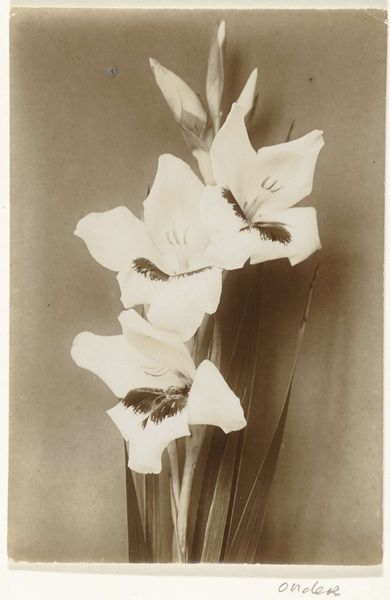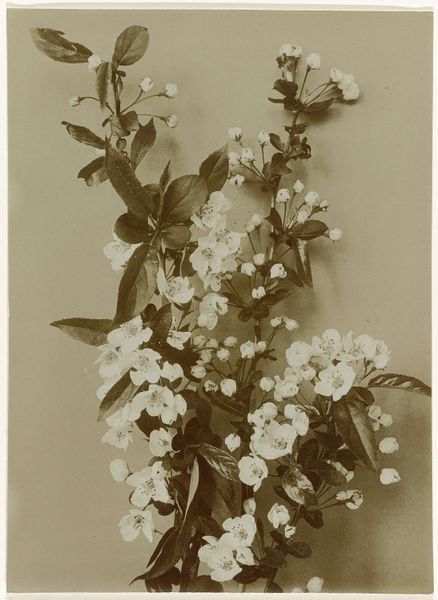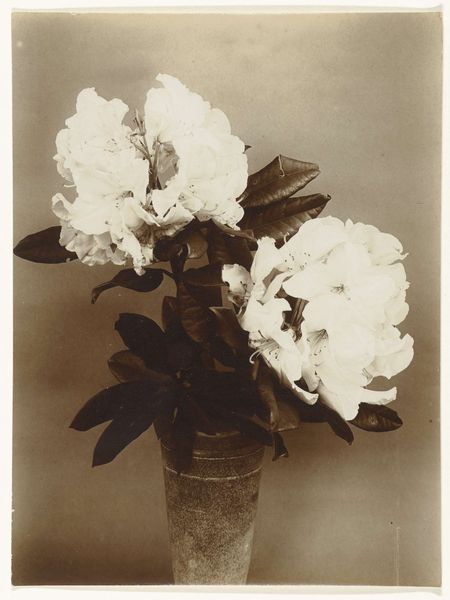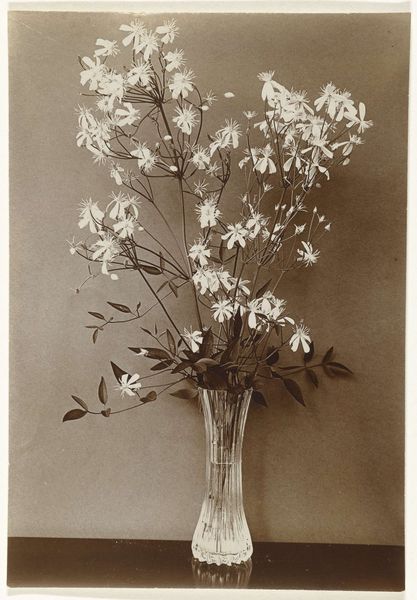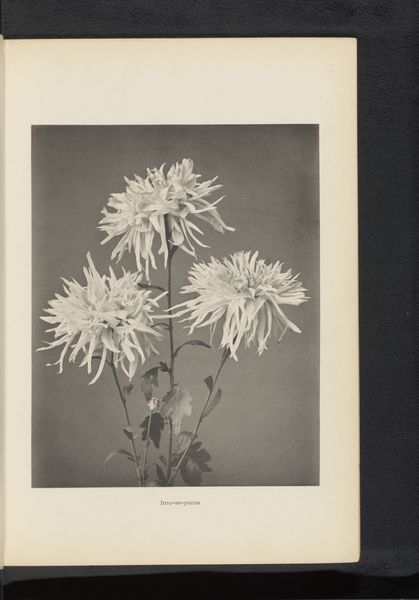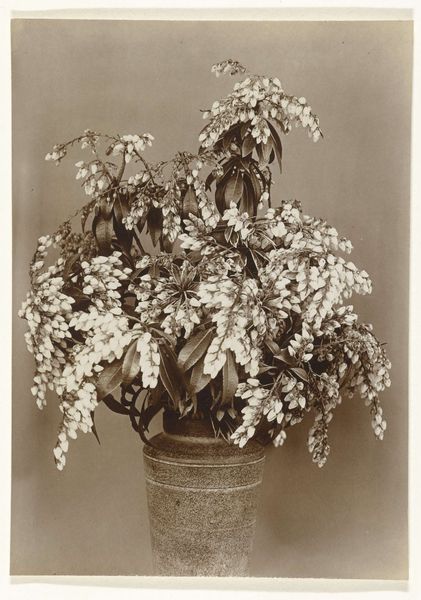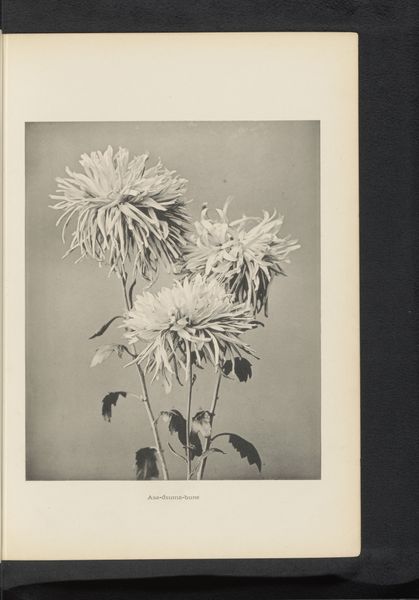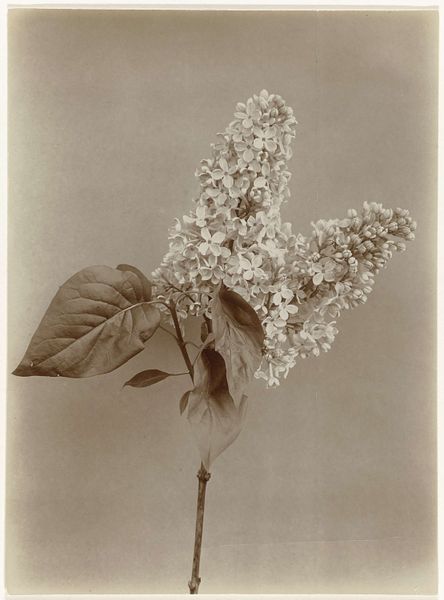
Dimensions: height 117 mm, width 161 mm
Copyright: Rijks Museum: Open Domain
This photograph of primula rosea was made by Richard Tepe, likely in the late 19th or early 20th century. Tepe was a master of the gelatin silver process, which gives the print its distinctive sepia tone. Now, photography, like any other medium, has a materiality all its own. The gelatin silver process involves coating paper with light-sensitive silver halide crystals, exposing it to light through a negative, and then developing the image. The artist’s skill lies in controlling these chemical reactions to achieve the desired tonal range and clarity. But what I find fascinating here is the democratization of image-making that photography represents. Unlike painting or sculpture, which require years of training and specialized skills, photography made art accessible to a wider range of people. The rise of photography coincided with the rise of consumer culture, and it quickly became a tool for advertising, documentation, and personal expression. It also opened up possibilities for the rise of amateurism and 'snapshot' aesthetics. So, in appreciating this seemingly simple photograph of flowers, we also acknowledge the broader social and technological forces that shaped its creation.
Comments
No comments
Be the first to comment and join the conversation on the ultimate creative platform.
